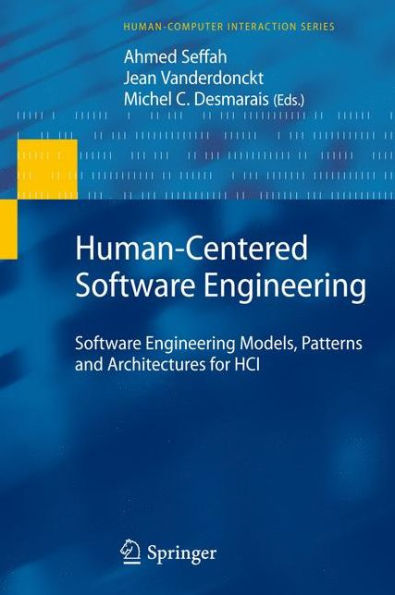5
1
9781849968034



Human-Centered Software Engineering: Software Engineering Models, Patterns and Architectures for HCI / Edition 1 available in Hardcover, Paperback

Human-Centered Software Engineering: Software Engineering Models, Patterns and Architectures for HCI / Edition 1
- ISBN-10:
- 1849968039
- ISBN-13:
- 9781849968034
- Pub. Date:
- 12/10/2010
- Publisher:
- Springer London
- ISBN-10:
- 1849968039
- ISBN-13:
- 9781849968034
- Pub. Date:
- 12/10/2010
- Publisher:
- Springer London

Human-Centered Software Engineering: Software Engineering Models, Patterns and Architectures for HCI / Edition 1
$169.99
169.99
In Stock

Product Details
| ISBN-13: | 9781849968034 |
|---|---|
| Publisher: | Springer London |
| Publication date: | 12/10/2010 |
| Series: | Human-Computer Interaction Series |
| Edition description: | Softcover reprint of hardcover 1st ed. 2009 |
| Pages: | 398 |
| Product dimensions: | 6.10(w) x 9.25(h) x 0.03(d) |
From the B&N Reads Blog
